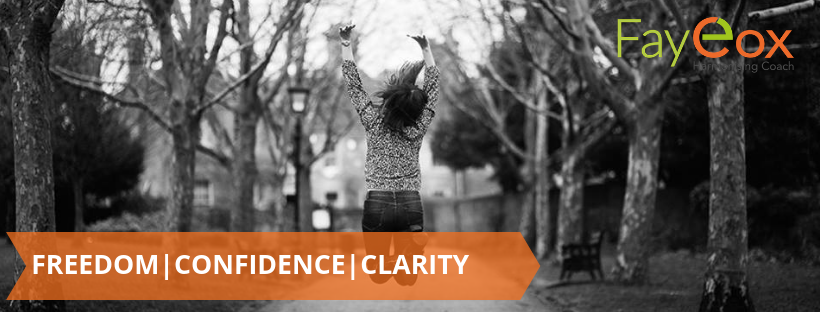
by Faye Cox | Jun 18, 2021 | Tips
Would you love to know how you can gain better perspective in any situation?
I’m here to tell you that it is possible and it’s a lot simpler than you may think.
We all find ourselves in situations where we may disagree with other people, and 9 times out of 10 when we’re in these situations we see things differently. We see things differently from the other person because of our map of the world, how we see things, our beliefs, our values and the experiences we’ve had in our life up until that point.
So today I want to give you a quick NLP (Neuro Linguistic Programming) technique that I use in my practice, to help you be able to see things from other people’s point of view, so you can put yourself in other people’s shoes in any situation. I call this the three pillars of perspective (also known as Perceptual Positions). You can physically do this and practice this technique over an over in preparation for when you find yourself in any given situation.
To start off with, there are three positions in the three pillars of perspective, position one, is you. That’s your position within any given situation or conversation, second position is the person you may be having that discussion with, It could be a situation at work, it could be something in your personal life, business, any given situation. A lot of the time you will find that this could be a 1 on 1 conversation, and you’re unable to see somebody else’s point of view. The third position, you are going to become a neutral participant within the conversation. You’re going to be the person who looks on the situation as an outsider, from a totally neutral perspective.

So how does it work?
To begin with, you can set up three different chairs in your living room, kitchen, at work in a conference room, wherever you happen to be. You can do this by yourself, you can also help your colleagues and employees do this, so when they’re in negotiations and communicating with other members of staff, or they’re trying to close a deal, any of those kinds of things, you can use this. Practise with them regularly.
Position 1 – Start off sitting in the first person’s chair so at this point you’re looking at things from your own perspective. Close your eyes and think of a situation that you may have found yourself in recently where you’re having a conversation, and the perspectives have been different, think back to the conversation that you were having and picture exactly what happened, what was said? How did you see things? How did the conversation go through your own eyes? Sit with that for a moment. Then I want you to do what we call in NLP which is break that state. So, open your eyes, think of something totally different, outside of the conversation, it might be what you’re having for dinner. It might be what your next meeting is. Just think about something entirely different.
And at that point, pick yourself up and move over to another chair, and this chair will be the second position.

Position 2 – Now you’re the other person in the conversation. When you’re ready, sit in that chair, close your eyes and put yourself in that person’s situation. Go back to the conversation, but this time you’re looking at it from the other persons. How did they see it? Imagine the situation from that person’s point of view, imagine stepping into their body and becoming them, and looking at you through their eyes, through their perspective and think back to what was said. What is their understanding of the situation? How did they see you and your actions in this situation? Once you’ve done that, open your eyes and break state again.
Now move to the third person’s chair.
Position 3 – Now you become the neutral third person. We are now the objective outsider. This person is somebody that you respect, somebody that you admire, somebody that you trust. We’re looking through their eyes now and seeing their perspective. Imagine that you’re watching this like a ‘fly on the wall’. Now it’s helpful here to picture yourself, to close your eyes and picture yourself as looking down on the conversation. We call ‘the helicopter view’, so you’re looking down on the conversation of these two people. You’re looking at something from a completely outside point of view and I want you to ask yourself these questions. How are these two people acting? Are they being fair to one another? Are they actively listening to what the other person is saying? Is the way that they are behaving, or the way that this conversation is going resolving anything or coming up with any plan or solution? Is one person being more dominant than the other.? What advice would you as that outside perspective, give both of these people to help them work out their differences?
Once you’ve done that, break state, again.
This is such a powerful tool to enable you to step into other people’s shoes, to see their perspective, but also step outside of the situation altogether and look in from a completely different viewpoint, because 9 times out of 10, that will help you to come up with resolutions and totally different answers to the ones that you were coming up with before when you’re only looking at something from your perspective.
It’s incredibly useful in life, your career and even in business for any situation you may find yourself in.
After doing this exercise, take a few minutes just to write down those different perspectives, write down what came out of that. What did you learn about yourself having done it? What did you learn about the other person? How do you want to move forward from here?
Like I said, this is a really great and very simple exercise that you can practice either yourself, with family members, with friends, with colleagues, so that you can deal with Conflict better and get better results for yourself and others.
Faye Cox Coaching – BELIEVING IN YOU UNTIL YOU DO TOO! If you’d like some support so you too can start believing in yourself, you can have a chat with me here
You can also subscribe to my You-Tube Channel where I release a brand new video each week talking about gaining perspective, limiting beliefs, changing the way you think and much more….


by Faye Cox | Jun 9, 2020 | Tips
Unfortunately, there are many times in our lives when stress creeps in and causes great angst. Life is busy and work, kids, school and responsibilities can seem overwhelming at times.
74% of UK adults have felt so stressed at some point over the last year they felt overwhelmed or unable to cope.
81% of women said this compared to 67 percent of men. 83% of 18-24 year-olds said this compared to 65 percent of people aged 55 and over. (Source: mentalhealth.org.uk)
Do you feel that your stress is getting you down?
Here are some tips to help deal with stress and its after-effects.
Stress has become a major cause of anxiety and panic attacks. If not dealt with, it can have an incapacitating effect on your life. More often than not, most people with A-type personalities are prime candidates for stress induced symptoms. The perfectionism they seek in everything they do never quite measures up to their expectations. This is not a perfect world; and it’s time those who live in it realize they aren’t perfect either, and nor should they be.
Most people deal with stress in different ways; either they ignore the initial problem which caused it; retreat within themselves or fall apart. However, those who recognize the signs nip it in the bud before it completely takes over. Using simple exercises can relieve the onset of stress. For example: While sitting at your desk at work, breathing exercises can bring you back to a calm state. Going outside for some fresh air also helps.
Walking or running for 20 minutes can release endorphins which relieve stress. Listening to classical music lowers the blood pressure and brings calm within.
Sometimes, however, stress reveals itself in other ways. Light headedness, an inability to focus, feelings of pressure and palpitations are all symptoms of stress. Moreover, continued stress can produce anxiety, panic, and the fight or flight syndrome. Here is one such case of how stress can simply overwhelm and, in some cases, debilitate.
A secretary was called into her administrator’s office, which was quite large and comfortable. As she was taking dictation, she suddenly found it hard to breathe; began to lose focus; and a queasy feeling in her stomach emerged. She could no longer concentrate and left the room suddenly.
Unbeknown to her, she had just experienced an anxiety attack brought on by stress. However, while there was nothing stressful going on at the time, she later identified the cause. An unpleasant thought had entered her mind while she was taking dictation, causing fear to take over forcing her to leave the office.
Upon further examination, it was determined the stress in her home life simply became too much, and filtered its way in to her working day.
This happens all too often and vice versa, where work stresses can filter in to your family life causing arguments. health issues and in some cases total disconnection from your loved ones!
If stress is getting you down, examine the cause. Determine the origin and discuss it with a professional or a loved one. Stress, if not acted upon, can cause serious health problems. Avoid it wherever and whenever you can.
You can learn more about reducing stress in our Personal Transformation Mastery self-study course.
If you need any further help reducing stress or creating healthier habits to move you towards success you can email me or take a look at the services we offer here. Using the FLOAT system we take our clients from Chaos to Calm in both life and business and help you create the success you deserve.
You can also come and join us over on Facebook in The Positivity Hub, where we talk all things, mindset, confidence and positivity.

by Faye Cox | Feb 6, 2020 | Uncategorized
Do you know what’s holding your self confidence back?
It’s great that you have decided to build your self-confidence. However, there are a few obstacles that can keep you from achieving your goal.
Most of the time, these obstacles are so obvious that they do not seem like obstacles at all, and all you can see is that your resolve to be self-confident is not taking you anywhere. Therefore, it is important to become aware of these seemingly harmless obstacles that have all the power to stop you in your path. Let’s have a look at what could be the reasons you’re not moving things forward.
Are You Undisciplined?
Some people simply have the talent to waste a lot of time without realising it. They lack the self-discipline to stop those actions that waste time. Imagine a situation where you have a list of tasks to be completed successfully as a part of your self-confidence building program.
However, the moment you enter your home you involuntarily grab the remote and start channel surfing on the square box in the corner of the room. It’s only after an hour that you realise you have been vegetating in front of the T.V in the time you had scheduled to do other tasks.
In a self-development program, it’s you and only you who has the power to change yourself. Nobody will come to monitor your actions and progress. You have to keep a watch on your inner graph and see to it that it goes up! Avoid temptations and stick to your schedule.
Are You Always Procrastinating?
Procrastination is one of the greatest and most silent killers of confidence. It does not let you complete your jobs and tasks in time. Things keep mounting and finally you get overwhelmed by all the many things that have piled up and need your attention.
The very basics of building confidence starts with listing the little things that are doable. You gain more confidence to take on greater tasks and responsibilities by successfully completing the lighter tasks first.
However not being prompt and delaying important things till they become urgent makes you miss the opportunity of working on your confidence and puts you in danger of falling back again into your earlier cycle, thereby wasting all the effort and energy you had put in to becoming aware of your low-confidence trap and getting out of it.
Does Your Old Self Keep Pulling You Back?
Assume. Assume. Assume is the technique here. Assume that you are a different person with habits you wanted to achieve..
Imagine the way you would like it to be. Imagine a self-confident you taking things in your stride. Then try to bring into your daily actions the way you have imagined yourself to be. “I dream by painting. Then I paint my dream” was the technique that the great painter Vincent Van Gogh followed.
Your assumed self will make people react to you in a different way, according to your new self. This will establish your new self to the world and will help you keep up the new self before it becomes a habit and second nature!
If you behave indecisively and helplessly, you will invoke proportionate reactions from people around you, thereby reinforcing your previous self. This throws you back again. Remember, you cannot get ahead if you keep looking back. Recognise this and stop yourself when you feel you’re sliding back.
Don’t Copy Self-Confidence. Don’t Try To Be Like Someone Else.
One of the greatest mistakes that people make when trying to increase their low self-confidence is falling in love with an image of their icon who may be a sports star or a film star or any celebrity and then they try to be like them.
This is one of the biggest mistakes people can make when trying in increase their self-confidence. You have to be yourself at all costs. Getting inspired is wonderful but merely copying these guys won’t take you anywhere.
There is no need for any two people in this universe to be exactly the same. The challenge is to be yourself in a world that is trying to make you like everyone else!
Try our FREE 12 day Building Confidence mini email course and get started on your journey to a more confident you TODAY!

by Faye Cox | Jan 10, 2020 | Uncategorized
Self-confidence is important to all of us. In the stress literature, it’s one of the characteristics of the hardy professional, the professional that remains healthy in the face of the high stress of constant change. It’s important, but how do you build and maintain a viable and realistic self-confidence?
One way to look at self-worth is to see it as an inference from what you say to yourself privately about yourself. It’s estimated that you make between 300 to 400 self-evaluations per day. Unfortunately, for the majority of us, those evaluations are far from kind. Most major in self-criticism. Research suggests that for the average person 80% of their self evaluations are negative; only 20 percent are positive.
A good mistake can often be worth 45 minutes of self-whipping-“That was stupid. I can’t believe I said that. And they were all watching me. They’re probably going home tonight and talking about me!” If that’s not bad enough, we have an old file clerk in the back of our brain that responds to our attack and goes back to check the evidence-“Just a minute, boss. Let me check the ‘stupid’ file here. Why yes, you are stupid! In fact, you’re getting worse. This reminds me of the time you…” Most of us are good at making ourselves feel worse, not better.
Even when you do give yourself the luxury of feeling good about something you did, it seldom lasts long. We discount our successes-“I was lucky!” “It’s about time; I should’ve done this weeks ago!” “They could’ve done better!” When was the last time you lost sleep over a good day? Never!
Even though self-critical, we put our best foot forward publicly. We present ourselves as being 95% effective and admit making an occasional mistake to be human. You may fool others, but you don’t fool yourself. When you compare what you know about yourself with everyone else’s public image, you lose badly. When you major in the self-critical, you end up searching for loved ones, parents, friends, and bosses who will affirm you and make up for your own lack of self-esteem. Unfortunately, when you have to have the support of others, they control your confidence. By withholding approval they can leave you feeling less effective, less confident and more dependent.
You would not talk to others the way you talk to yourself! “You did that? You’re stupid! Did anyone see you? They saw you! Do they know I know you? I mean it reminds me of the time you….” Who needs friends like that! If a manager talked to an employee the way you talk to yourself, he could file a grievance and win. You deserve the same if not better treatment than what you would give a friend. Learn to make room for your mistakes as learning experiences.
Since mistakes are a part of life in the fast lane, we need to find ways to be self-critical without majoring in self-whipping. Start by looking at criticism as course-correction data that helps us get back on track in our journey to success. The goal is not conviction or blaming; it’s providing future-focused feedback that allows you to be more effective tomorrow!
Scott Adams, the Dilbert Cartoonist, put these insights into practice in dealing with a novice tennis partner: “Once at a tennis tournament, I was paired with a woman who had just learned how to play. Every time she missed a shot, she immediately turned to me, expecting that I would be disappointed or frustrated. Instead, I talked to her about our strategy for the next point. By doing so, I sent a very important message: The past doesn’t matter. I didn’t encourage her with empty praise-that rarely works. But I know that if she dwelled on a mistake, she was more likely to repeat it, and that if she focused on how we were going to win the next point, she was more likely to help us do just that. Over several days, her abilities improved dramatically and we ended up winning the tournament.”
Treat yourself the same way. Life is like a moving vehicle with no brakes. If you spend too much time in the rear-view mirror, you will hit a tree out the front window. In fact, that is why your rear-view mirror is smaller than your front window. Get out of your rear-view mirror and start focusing on driving to a desired future. Try letting go of the general self-attacks; use specific feedback. What did you do that you did not handle well?
Remember, it is easier to admit you made a mistake than to admit you are one. I’m not rude, but I’ve had moments of road rage that I’m not proud of. I know it wasn’t appreciated either; the other driver didn’t even wave with all his fingers!!
After identifying a specific mistake, focus on the future by asking two key questions: First, what can you do to rectify the problem? If any constructive action or apology could help rectify the problem, do just that. Secondly, and most importantly, how would you handle the same situation if it were to occur again? If you have a valued colleague or friend, use them as a sounding board. If not, write down your thoughts or use these questions to help focus your self-criticism. When you’ve learned from the past and focused on a new strategy, get back into the game of life.
Self-confidence begins when you can learn from errors, and then move beyond them to consistently improve. Welcome to the challenge of turning your mistakes into stepping stones to making change work for you. To really make a difference add the habit of ending the day by catching yourself being effective; use a journal to record at least 3 things you’re grateful for and 1 success. You may be winning and not know it if you’re not keeping score!
To find out more about how you can build your own self-confidence go to our website or find us on Facebook

by Faye Cox | Jan 6, 2020 | Tips
There are very few people who could call themselves perfect and be right. Most of us need to build self confidence today, but the majority just either ignore the issues or concentrate on the negatives: stress, worry, jobs, money problems and relationship issues. Concentrating on these areas drains our self confidence rather than improving it.
If you could improve your self confidence you could make more money, look and feel better physically, or just be more relaxed with other people. Below there are five simple techniques that have been proved to help build self confidence today.
1. Talk to yourself. It sounds crazy but it works. All of us have a running monologue constantly in our heads, whether we realize it or not. Everything we see, hear, or touch sparks off an immediate dialog in our thoughts.
For those who lack confidence this monologue is filled with negative messages many of which are the negative side of adverts from television, radio, advertisement boardings, newspapers, and just overhearing other people talk.
These negative thoughts literally suck energy from our minds and bodies and block the flow of positive messages. We need to hear the positive messages as they will build self confidence today and raise our self esteem. Take control. Use your inner thoughts to talk to yourself in a positive manner, as often as you can.
As an example one of my regular sayings is “I like myself, I like myself, I like myself”. I just repeat it for a couple of minutes. It sounds cheesy, but does build self confidence today – Try it. I bet that if you go to the mirror right now and repeat out loud “I like myself!” 50 times, it will be impossible to keep from smiling.
2. Dress as smartly and as classy as you can. You won’t feel at your best if you don’t look your best. You will be amazed at just how much more confidence you will have just looking your best. It just feels good when you are wearing your best clothes, are well groomed, and are surrounded by a clean environment. So what if it is Saturday, you need to build self confidence today not next week. Put on your nice clothes, get the car washed, style that hair! A hairdresser once told me “Everyday is show time!”. Forget about saving clothes for special occasions. I used to do this all the time and ended up never wearing half of my wardrobe for fear of spoiling it….what’s that all about. Every day is a special occasion, so get wearing those beautiful clothes you’ve never dared to wear!
3. Increase your self esteem even more by giving thanks to what you are, how you look, and what you are doing. Say “thank you” to yourself to everything you see, all whom you meet, and each smile that you receive.
4. Stand or sit correctly: How you stand sends out a message to the World, and in turn, back to you. This results in improving how you feel about yourself and will build self confidence today and every day.
There is scientific evidence that shows how posture affects our mood. Do not slouch. Slouching produces a down mood. By slouching you are telling the world and yourself it doesn’t matter, you don’t matter. Standing tall and upright will actually lift your mood. Help build up your confidence by pulling back those shoulders, stop that slouch, and walk proud.
5. Smile. Just smile and things seem better somehow. Practice smiling regularly and get your facial muscles used to the physical act of smiling.
Go to the mirror and smile – make yourself. Not a grimace, but a proper smile. If you don’t think you can try this:
- Open your eyes as wide as you can – (try and get your eyebrows right up to you hair line)
- Slightly open your mouth
- Pull the corners of your mouth back towards your ears (If your not sure pull them back with your fingers so you know what it feels like then try again without your fingers).
- Repeat 50 times. Get your facial muscles used to smiling and you will smile more and encourage smiles from others. This will make you feel happier and with that you’ll build self confidence today.
To find out more about how you can build your own self-confidence go to our website or find us on Facebook








